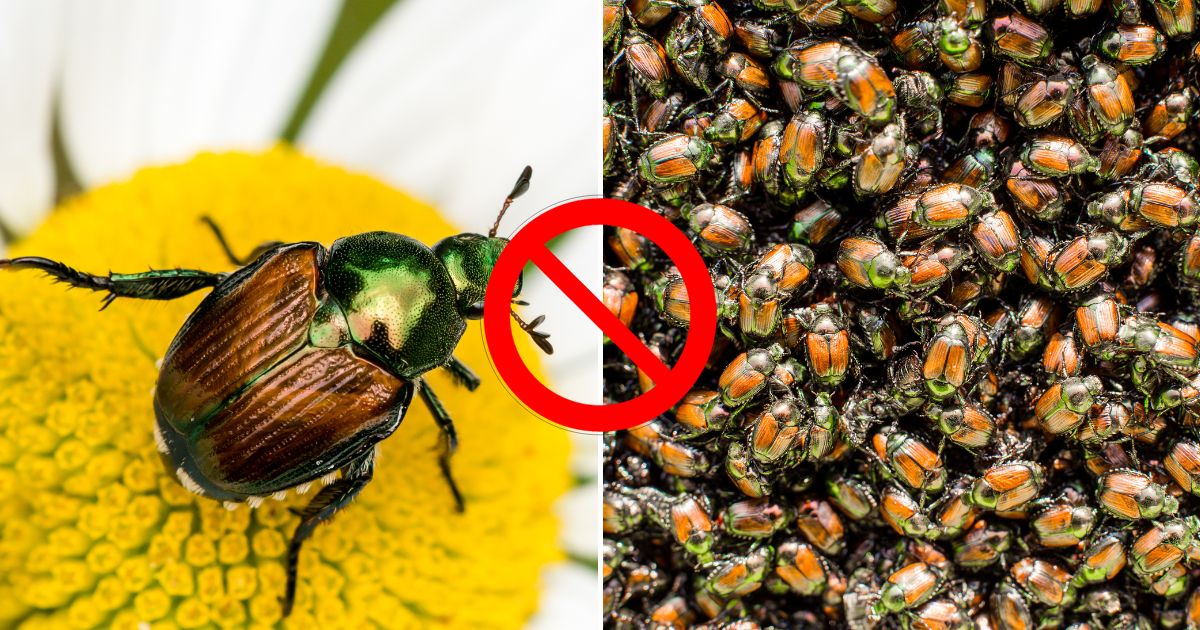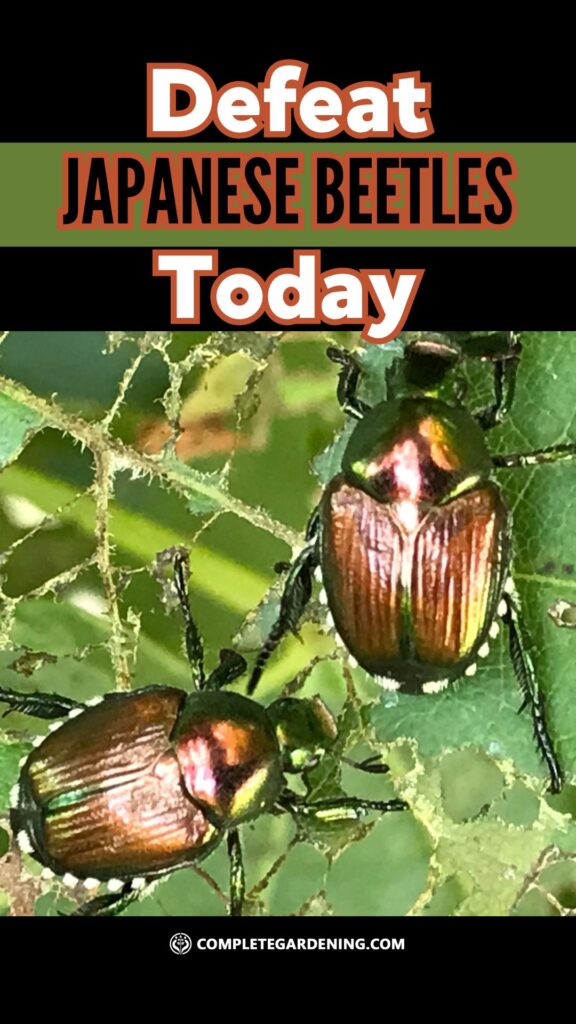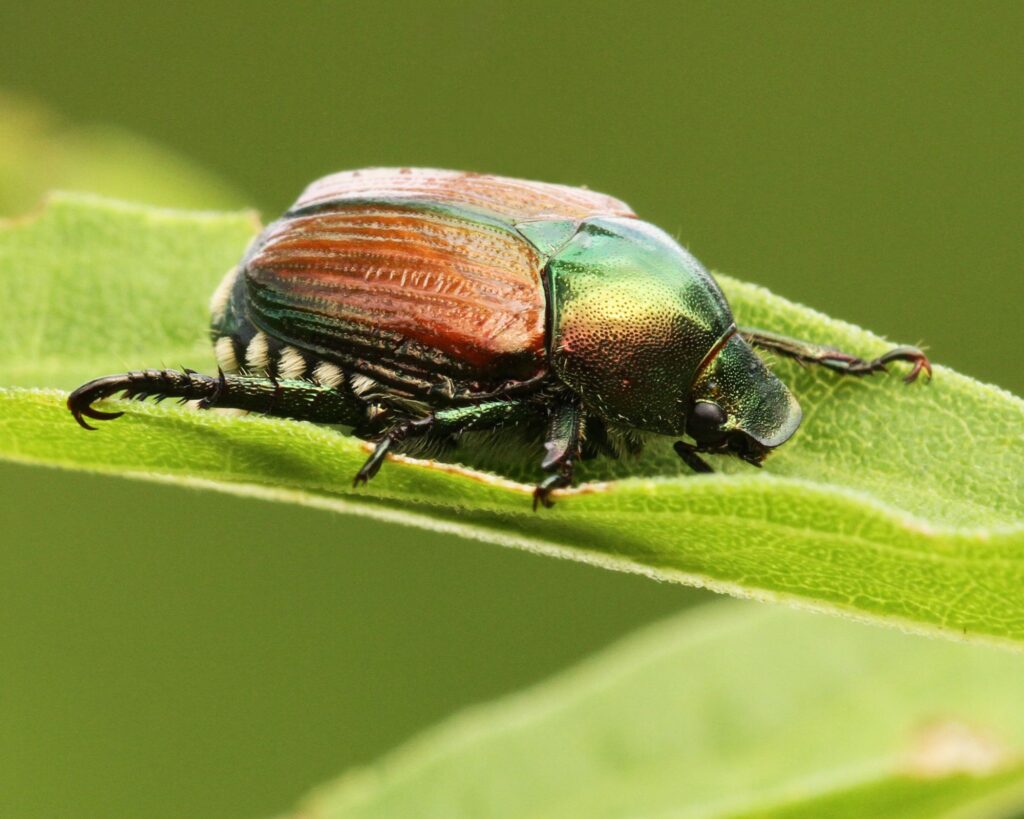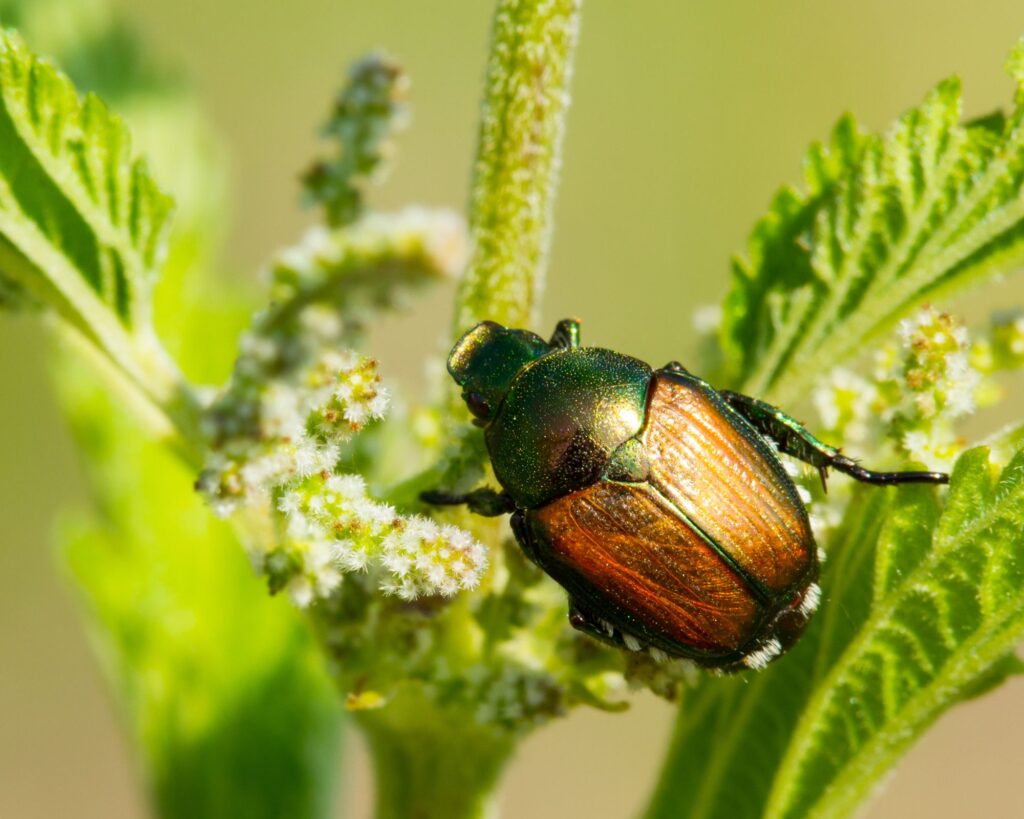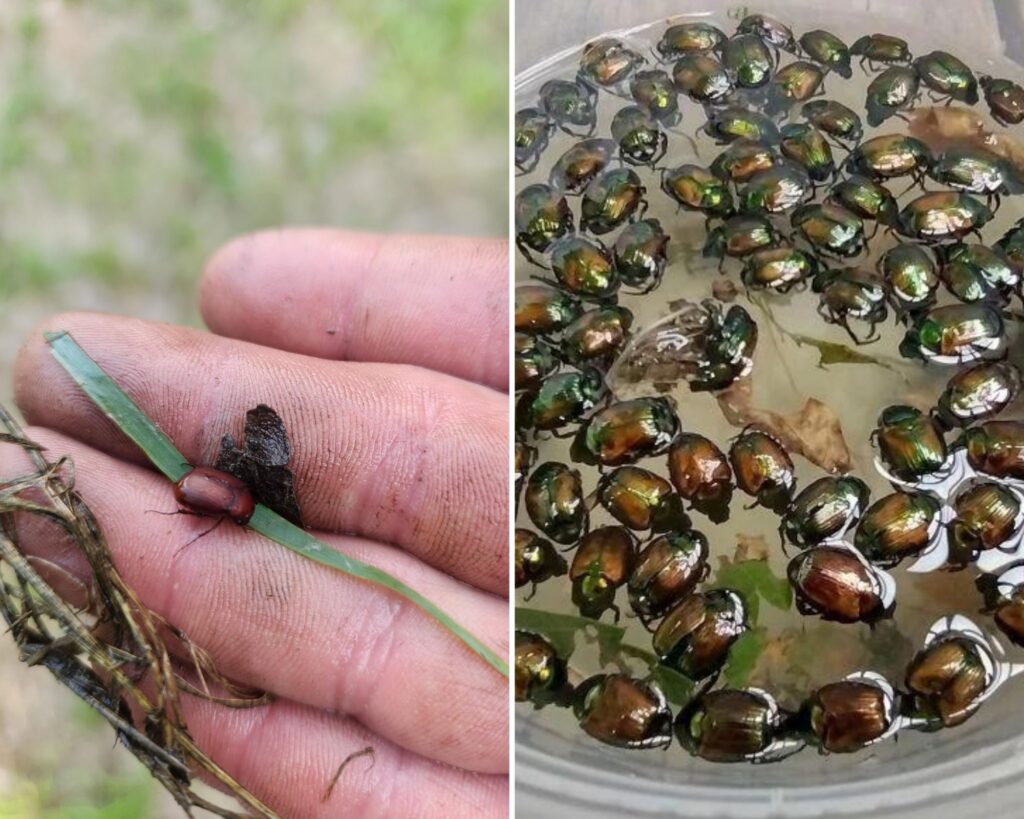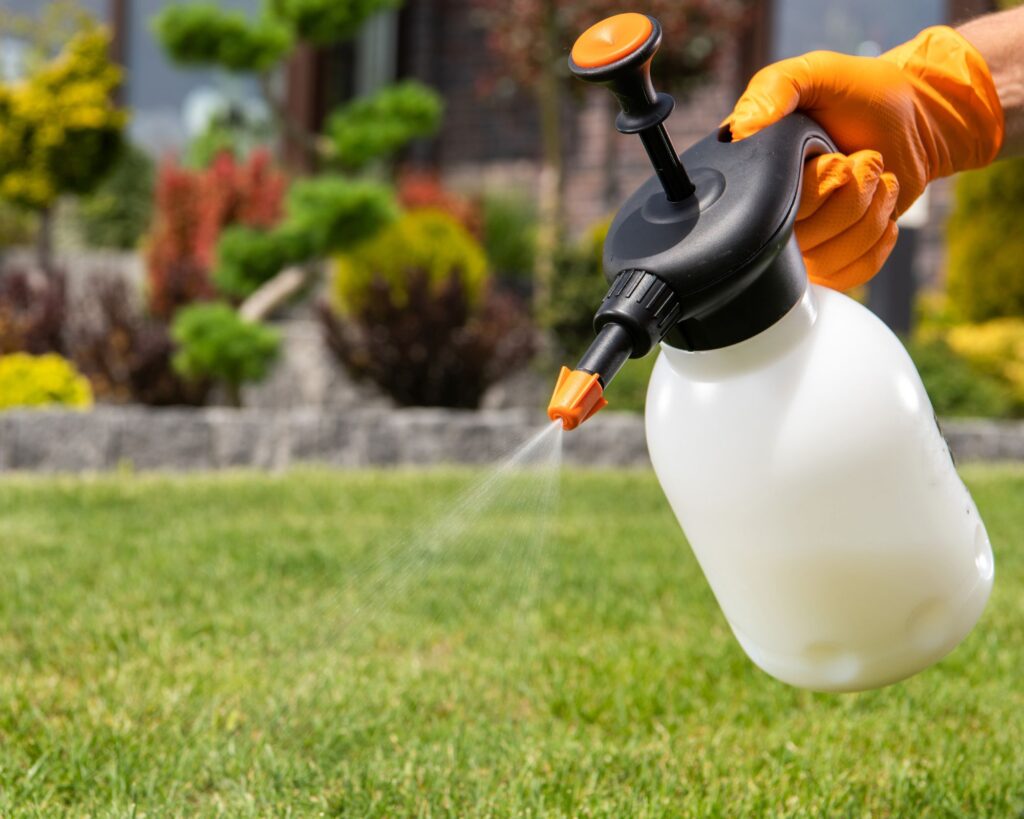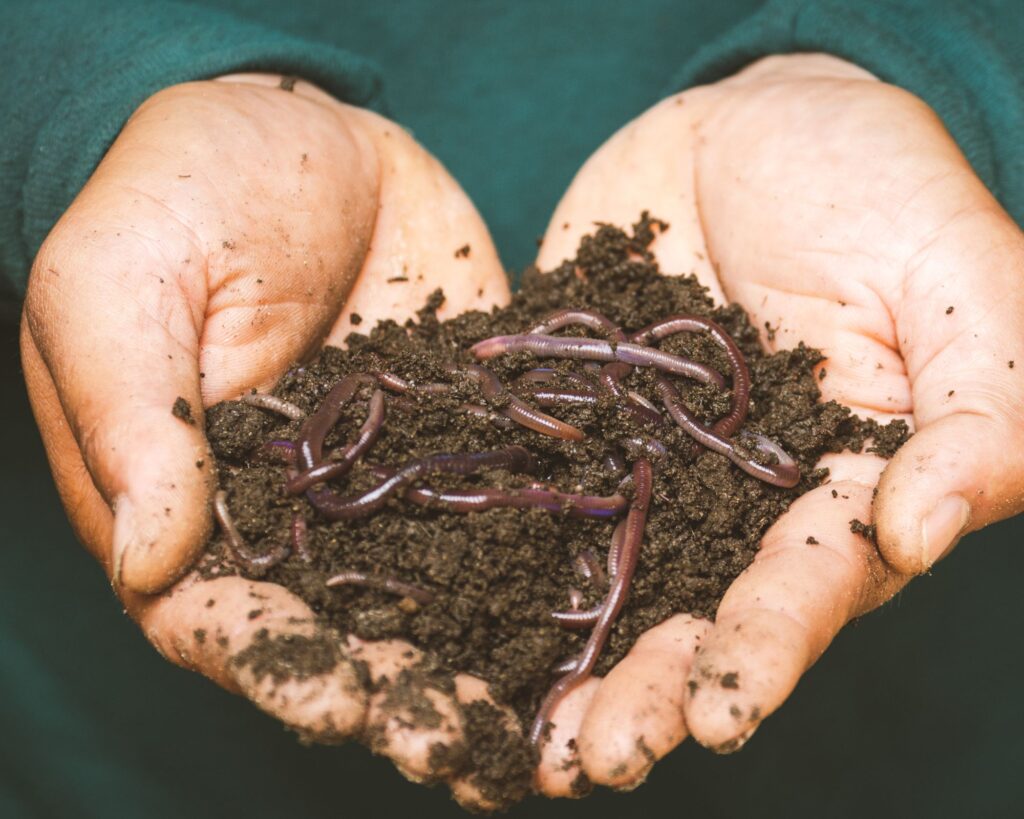Is your garden under siege by Japanese beetles? Watching your plants get devoured day after day can be frustrating, but there’s hope. Imagine having a garden free from pests without the need for harmful chemicals.
The secret? It starts with something as simple as manually removing the beetles and tossing them into soapy water. It’s fast, effective, and an instant way to stop the damage.
But that’s not all. Want long-term relief? Traps, neem oil, and beneficial nematodes can help keep your plants safe while reducing future infestations.
If you’re ready to say goodbye to beetle damage once and for all, these easy, natural strategies are the solution you’ve been searching for.
Understanding Japanese Beetles
Japanese beetles, known for their metallic green and copper-colored bodies, can be a challenge for gardens. They follow a specific lifecycle and prefer certain habitats.
Lifecycle and Behavior
Japanese beetles start as eggs laid in the soil, typically in July. These eggs hatch into larvae known as grubs, which feed on grassroots until they mature. By spring, these grubs transform into pupa and eventually emerge as adult beetles.
Adult beetles live for about 30 to 45 days. They are most active during sunny days and feed on over 300 plant species, including roses, grapes, and linden trees.
When in large numbers, they can cause significant damage by skeletonizing leaves, which means they eat the tissue between the veins, leaving a lace-like appearance.
Common Habitats
Japanese beetles thrive in areas with well-irrigated turf and plenty of plant species. They are often found in gardens, lawns, and agricultural fields. Adults prefer plants with soft leaves, making your flower beds and fruit trees prime targets.
During the larval stage, they stay in the soil, particularly in well-maintained lawns. They feed on the roots of grasses, which can cause brown patches in your yard. Keeping these areas under surveillance can help in early detection and management.
Preventive Strategies
Preventing Japanese beetles involves various methods such as planting beetle-repellent flora, ensuring your lawn remains healthy, and introducing natural predators.
Cultivating Beetle-Repellent Plants
Some plants naturally deter Japanese beetles. Consider adding geraniums, garlic, and chives to your garden. These act as natural repellents and are easy to incorporate into existing landscapes.
Geraniums produce chemicals that can paralyze beetles temporarily. This gives you an opportunity to collect and dispose of them.
Additionally, plants like catnip, rue, and marigold serve as effective deterrents. These plants not only add beauty to your garden but also keep beetles at bay. Position these strategically around your susceptible plants to form a natural defense barrier.
Maintaining Lawn Health
A healthy lawn is less attractive to Japanese beetles. Regular mowing, watering, and fertilizing are essential. Avoid overwatering, as beetles prefer moist environments.
Aerate your lawn annually to promote grass growth and improve soil conditions, making it less hospitable for beetle larvae.
Use grub control products in the spring and fall to target larvae before they become adults. Milky spore and beneficial nematodes are effective organic options.
Milky spore is a naturally occurring bacterium, while nematodes are microscopic worms that attack beetle grubs.
Natural Predators and Beneficial Insects
Encouraging natural predators can help control beetle populations. Birds such as robins, cardinals, and starlings feed on both adult beetles and larvae. Installing bird feeders and birdhouses can attract these helpful birds to your yard.
Beneficial insects like tachinid flies and parasitic wasps can also reduce beetle numbers. These insects lay eggs on or in beetles, and their larvae feed on the beetles, eventually killing them.
You can purchase these beneficial insects from garden suppliers and release them into your garden for added control.
Mechanical Removal Techniques
Mechanical removal of Japanese beetles involves manual methods that can be efficient and environmentally friendly. You might find hand-picking them from plants or using traps and baits to be particularly useful.
Hand-Picking
Hand-picking Japanese beetles from your plants can be an effective and immediate way to reduce their numbers.
It’s best to do this in the early morning when the beetles are less active. Gently shake or pick them off your plants and drop them into a bucket of soapy water to kill them.
This method is straightforward and doesn’t involve chemicals, making it safe for both your garden and local wildlife.
Make sure to check your plants daily for new infestations, especially during their peak season. Regular inspection and removal can significantly control the beetle population and protect your plants from severe damage.
Traps and Baits
Using traps and baits can also help to manage Japanese beetles. These traps use a combination of pheromones and floral scents to lure the beetles. Once inside, the beetles are unable to escape.
Place the traps about 30 feet away from your desirable plants to draw the beetles away. Be cautious, though, as these traps can attract more beetles than they catch if not used correctly. Make sure to empty the traps regularly to maintain their efficacy.
You can buy ready-made traps from gardening stores or make your own using simple materials. Correct placement and regular maintenance of these traps can make a noticeable difference in beetle management.
Chemical Control Options
When dealing with Japanese beetles, using chemical control can be effective. You can choose between organic pesticides and chemical insecticides, depending on your preference and needs.
Organic Pesticides
If you prefer a more natural approach, neem oil can be a great option. Neem oil, when sprayed on affected plants, acts as a repellent and disrupts the beetles’ hormonal balance, preventing them from reproducing. Another choice is pyrethrin-based sprays.
These sprays are derived from chrysanthemum flowers and are effective in targeting beetles while being safer for beneficial insects.
When using organic pesticides, apply them during early mornings or late afternoons to avoid harming bees and other pollinators.
Chemical Insecticides
For more aggressive control, you might consider chemical insecticides such as carbaryl or imidacloprid.
Carbaryl is a contact insecticide that kills beetles on contact, while imidacloprid is a systemic insecticide absorbed by the plant, providing extended protection.
Applying these insecticides requires caution. Always follow the label instructions carefully, and prefer to spray during non-bloom periods to protect pollinators.
Keep in mind that while effective, chemical insecticides can also affect non-target species, so use them judiciously.
Environmental Considerations
When dealing with Japanese beetles, it’s important to consider both the well-being of pollinators and the health of your soil. These aspects ensure that your efforts are both effective and environmentally friendly.
Safeguarding Pollinators
Japanese beetle control methods can affect pollinators like bees and butterflies. Avoid using broad-spectrum insecticides that harm a wide range of insects. Instead, opt for targeted treatments such as neem oil or insecticidal soaps.
Timing is critical; apply treatments in the early morning or late evening when pollinators are less active. Create a pollinator-friendly garden with plants that bloom at different times, providing continuous food sources.
This helps mitigate any accidental harm caused during beetle control.
Soil Health Impact
Certain treatments for Japanese beetles can impact soil quality. Chemical insecticides can disrupt beneficial soil organisms, affecting soil health.
Use treatments like beneficial nematodes, which specifically target beetle larvae without harming other soil creatures.
Maintain soil health by incorporating organic matter like compost. This not only provides nutrients but also supports a healthy microbial ecosystem. Proper watering and avoiding soil compaction also contribute to a thriving garden environment.
Dealing with Japanese beetles doesn’t have to be a frustrating battle that leaves your garden in ruins.
By combining simple, effective methods like hand-picking beetles and using soapy water, with long-term solutions such as traps, neem oil, and introducing beneficial nematodes, you can protect your garden without resorting to harsh chemicals.
Whether you’re cultivating beetle-repellent plants, encouraging natural predators, or practicing preventive lawn care, these strategies offer a natural and sustainable way to keep your garden thriving and beetle-free.
With a bit of effort and attention, you’ll be able to enjoy a beautiful, pest-free garden all season long.
